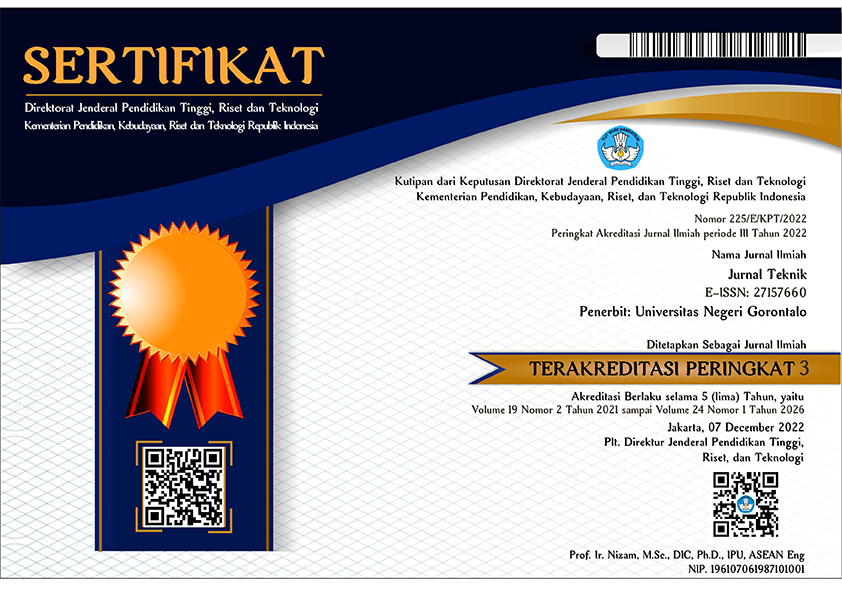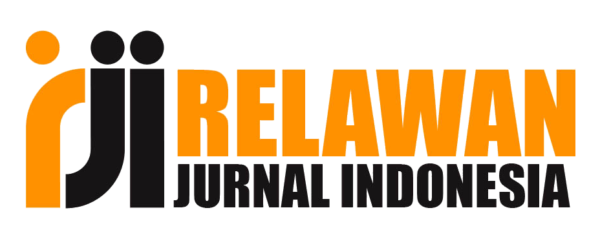Design of Smart Iron Plate Heating Machine Using Quality Function Deployment Method
Abstract
The number of gloves entering the ironing department is greater than the number of gloves that are ironed, causing a lot of accumulation of gloves that have not been ironed. Based on this problem, a problem identification was carried out using the IDEF0 method. Based on the results of the discussion, the solution to the existing problem is to design an ironing plate heating machine using the Quality Function Deployment (QFD) method which can reduce ironing process time and increase productivity. After the machine was completed, a test was carried out where the results of the gloves from the ironing plate heating machine had met the standard operating procedure. In addition, the standard ironing time decreased where initially when using a conventional iron it took 47.68 seconds to iron. While when using an ironing plate heating machine it took 36.14 seconds to iron. The number of gloves produced in 4 hours of using a conventional ironing machine produced 300 gloves while the ironing plate heating machine produced 350 gloves.
Downloads
References
Bevilacqua, M., Mazzuto, G., & Paciarotti, C. (2015). A combined IDEF0 and FMEA approach to healthcare management reengineering. International Journal of Procurement Management, 8(1–2), 25–43. https://doi.org/10.1504/IJPM.2015.066286
Duru, O., Galvao, C. B., Mileski, J., Robles, L. T., & Gharehgozli, A. (2020). Developing a comprehensive approach to port performance assessment. Asian Journal of Shipping and Logistics, 36(4), 169–180. https://doi.org/10.1016/j.ajsl.2020.03.001
Hwangbo, Y., Yang, Y.-S., Kim, M.-S., & Kim, Y. (2020). The effectiveness of Kano-QFD approach to enhance competitiveness of technology-based SMEs through transfer intention model. Sustainability (Switzerland), 12(19). https://doi.org/10.3390/SU12197885
Isaksson, M., Möller, H., & Pontén, A. (2008). Occupational allergic contact dermatitis from epoxy resin in a golf club repairman. Dermatitis, 19(5), E30–E32. https://doi.org/10.2310/6620.2008.07051
Kim, H. S., Choi, J. S., Yi, J. H., Lim, Y. T., & Tack, G. R. (2008). Development of wireless putting grip sensor system. Impact of Technology on Sport II, 283–288. https://www.scopus.com/inward/record.uri?eid=2-s2.0-61849117388&partnerID=40&md5=e178ffa0c4392288903b61542b9a3993
Moran, D., Ertas, A., & Gulbulak, U. (2021). A unique transdisciplinary engineering-based integrated approach for the design of temporary refugee housing using kano, hoq/qfd, triz, ad, ism and dsm tools. Designs, 5(2). https://doi.org/10.3390/designs5020031
Motoyama, Y., Tokunaga, H., Hashiguchi, M., Ooba, Y., Takiyoshi, S., & Okane, T. (2024). Effect of the Cooling Capability Difference Between Additively Manufactured Sand Molds on Shrinkage Defect in A356 Alloy Castings. International Journal of Metalcasting, 18(2), 1424–1437. https://doi.org/10.1007/s40962-023-01120-8
Mu’Tamar, M. F. F., Fakhry, M., & Ulya, M. (2021). Identification of product and design characteristics of eucalyptus herbal tea bags. In S. N.M.S., M. A.Z., H. A., M. A.N., I. A., P. C.G., A. D.Y., I. D.M., A. R. D.F., I. D.W., S. H.Y., N. M., I. N., S. P., S. R., M. S.D., H. T., U. null, R. W.G., & S. W.B. (Eds.), IOP Conference Series: Earth and Environmental Science (Vol. 733, Issue 1). IOP Publishing Ltd. https://doi.org/10.1088/1755-1315/733/1/012040
Nachazelova, D., Koukolikova, M., Brazda, M., & Urbanek, M. (2024). Innovation in AISI M2 Steel through Additive Manufacturing and Induction Heat Treatment. 29th International Federation for Heat Treatment and Surface Engineering World Congress, IFHTSE 2024, 312–315. https://doi.org/10.31399/asm.cp.ifhtse2024p0312
Nikolov, S., Dimitrova, R., Malakov, I., & Zaharinov, V. (2023). USING THE QUALITY FUNCTION DEPLOYMENT METHOD IN THE DESIGN OF DIE CASTING CELLS. In K. B. (Ed.), Annals of DAAAM and Proceedings of the International DAAAM Symposium (Vol. 34, Issue 1, pp. 312–319). DAAAM International Vienna. https://doi.org/10.2507/34th.daaam.proceedings.041
Ocak, Z., & Gönül Sezer, E. D. (2022). An integrated approach to identify engineering student requirements. Sigma Journal of Engineering and Natural Sciences, 40(3), 568–576. https://doi.org/10.14744/sigma.2022.00061
Siwiec, D., Pacana, A., & Gazda, A. (2023). A New QFD-CE Method for Considering the Concept of Sustainable Development and Circular Economy. Energies, 16(5). https://doi.org/10.3390/en16052474
Suhartini, S., Mahbubah, N., & Basjir, M. (2022). DEVELOPMENT OF SME’S BUSINESS COOPERATION INFORMATION TECHNOLOGY SYSTEM DESIGN. Eastern-European Journal of Enterprise Technologies, 6(13–120), 78–86. https://doi.org/10.15587/1729-4061.2022.264979
Tserng, H.-P., Cho, I.-C., Chen, C.-H., & Liu, Y.-F. (2021). Developing a risk management process for infrastructure projects using idef0. Sustainability (Switzerland), 13(12). https://doi.org/10.3390/su13126958
Vasilyev, S., Slabunov, V., Voevodin, O., & Slabunova, A. (2020). Development of a decision support system at the stages of pre-design studies and design of irrigation systems based on IDEFo functional modelling methodology*. Irrigation and Drainage, 69(4), 546–558. https://doi.org/10.1002/ird.2434
Vilasdechanon, S., & Sopadang, A. (2018). Business process reengineering for the saline management in hospitals. 2018 5th International Conference on Industrial Engineering and Applications, ICIEA 2018, 84–88. https://doi.org/10.1109/IEA.2018.8387075
Xu, X.-G., Zhang, L., Mao, L.-X., & Li, K. (2022). New Approach for Quality Function Deployment Using an Extended CoCoSo Method with Spherical Fuzzy Sets. Systems, 10(6). https://doi.org/10.3390/systems10060253
Zhou, H., Tian, G., Zhang, T., Zhang, X., Pham, D. T., Xiu, X., Feng, Y., & Li, H. (2024). Triangular Fuzzy QFD–MCDM Combination Approach for Green Building Design Scheme Evaluation. Buildings, 14(2). https://doi.org/10.3390/buildings14020520
Zhu, G., Wang, L., Su, B., Wang, B., Cui, R., Yan, H., Jiang, B., Zhou, J., Chen, R., Luo, L., Su, Y., & Guo, J. (2024). Deciphering the microstructural development and excellent ductility in electron beam wire-fed additive manufacturing of Ti-6Al-3Nb-2Zr-1Mo alloys based on high deposition rate. Additive Manufacturing, 94. https://doi.org/10.1016/j.addma.2024.104485
Copyright (c) 2025 Raden Rara Arsia Permata Noor, Intan Berlianty (Author)

This work is licensed under a Creative Commons Attribution-ShareAlike 4.0 International License.













